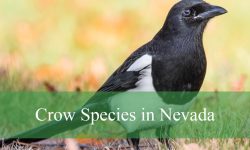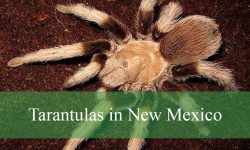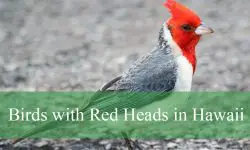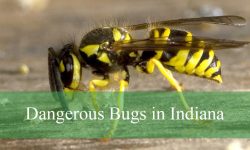Delaware is home to several dove species that bring gentle beauty and soothing sounds to both wild and urban landscapes. These birds, known for their graceful flight and soft cooing, can be found across farmlands, woodlands, and backyards throughout the state. While the Mourning Dove is the most widespread, other species such as the Rock Pigeon and Eurasian Collared-Dove are also common in developed areas.
Doves play a vital role in Delaware’s ecosystem by dispersing seeds and supporting biodiversity. Their calm nature and adaptability allow them to thrive in both natural and human-modified environments. Observing them offers insight into the delicate balance of wildlife that coexists within the state’s diverse habitats.
Below are the five main types of doves found in Delaware, along with detailed identification tips, behaviors, and habitat information to help birdwatchers and nature enthusiasts recognize these peaceful birds in the wild.
Common Types of Doves Found in Delaware
Mourning Dove (Zenaida macroura)
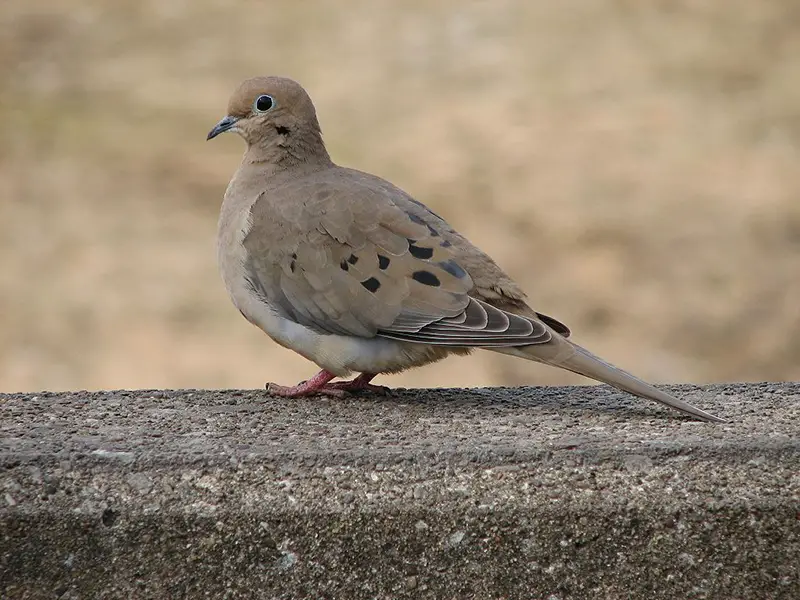
The Mourning Dove is the most common and widespread dove species in Delaware, recognized for its slender body, long pointed tail, and soft, mournful cooing call. Adults have a light brown to grayish-tan plumage with black spots on the wings and a subtle pinkish hue on the breast. Their delicate appearance is complemented by a small black bill and striking blue ring around the eyes. Measuring about 9 to 13 inches in length with a wingspan of up to 18 inches, they are medium-sized birds often seen perched on power lines or foraging on the ground.
Their behavior is gentle and cautious, often flying off with a rapid, whistling sound of wings when startled. Mourning Doves are primarily seed eaters, feeding on a variety of grains, grasses, and weed seeds found on open grounds, farmlands, and suburban yards. They drink by sucking water continuously without raising their heads — a trait uncommon among most birds.
Their call, a soft and melancholic “coo-ah, coo, coo, coo,” gives them their name. These soothing sounds are frequently heard during early mornings and evenings, especially in spring and summer. Males perform courtship displays with gliding flights and gentle cooing to attract females.
In Delaware, Mourning Doves are year-round residents and breed prolifically, sometimes raising up to six broods per year. They build simple, flimsy nests on tree branches, ledges, or even flowerpots. Adaptable and abundant, they are one of the most frequently observed birds in the state’s backyards, fields, and along rural roadsides.
Rock Pigeon (Columba livia)
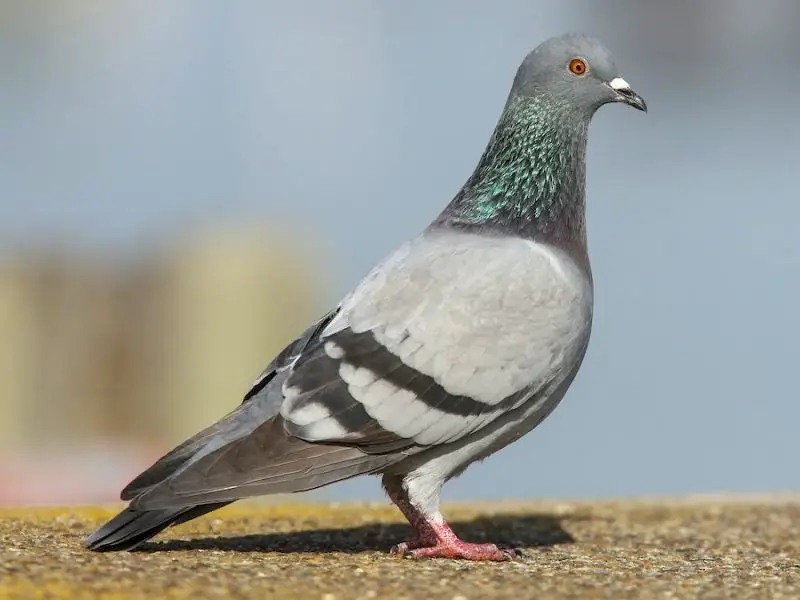
The Rock Pigeon, also known as the common city pigeon, is a familiar sight in both urban and rural parts of Delaware. It has a stout body, short legs, and a rounded tail. Its plumage varies widely, but most individuals are bluish-gray with two distinct black wing bars and an iridescent green or purple sheen around the neck. Adults typically measure about 11 to 13 inches long with a wingspan ranging from 19 to 26 inches.
These birds are highly social and can be seen in large flocks feeding in city parks, building ledges, and agricultural areas. Rock Pigeons primarily eat grains, seeds, and scraps of human food, showing remarkable adaptability to human environments. Their strong homing instinct has made them valuable for centuries as messenger and racing pigeons.
The Rock Pigeon’s call is a repetitive, throaty cooing sound — “coo-roo-coo” — that is often heard echoing in cities and under bridges. Males perform a bowing display, puffing out their chest and cooing while circling the female during courtship.
In Delaware, Rock Pigeons are permanent residents, thriving especially in Wilmington and other urban areas. They nest in building crevices, bridges, barns, and cliffs, using twigs and debris to construct their nests. Despite being considered pests in some settings, they play an important ecological role in cleaning up leftover grains and seeds.
Eurasian Collared-Dove (Streptopelia decaocto)
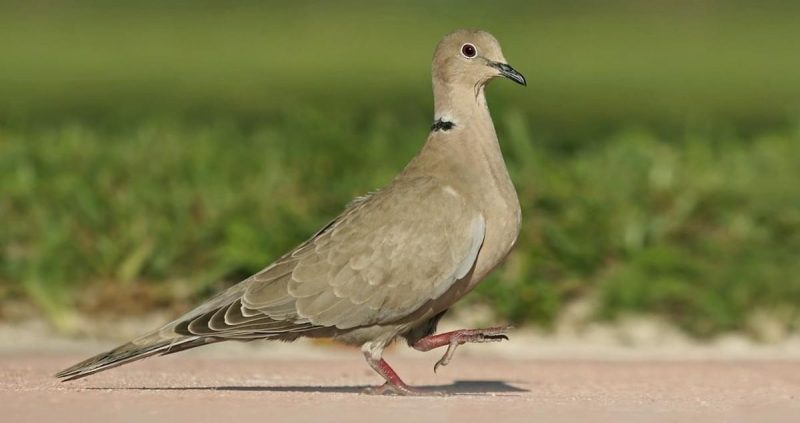
The Eurasian Collared-Dove is a relatively new species in Delaware, having expanded its range across North America over the past few decades. It is slightly larger than the Mourning Dove, measuring about 12 inches in length, with a chunky body, squared tail, and pale gray plumage. The distinguishing feature is a thin black collar or “necklace” across the back of its neck, giving the bird its name.
This dove is often seen perched on telephone wires, rooftops, and backyard feeders, showing little fear of human presence. It feeds mainly on seeds and grains but will also eat berries and small insects when available. The Eurasian Collared-Dove’s flight is swift and direct, with powerful wingbeats that produce a noticeable fluttering sound.
Its call is a distinctive three-note coo — “coo-COO-coo” — that can be heard repeatedly throughout the day. Unlike the soft, mournful tone of the Mourning Dove, the Collared-Dove’s voice is louder and more rhythmic. During breeding season, males engage in flight displays and cooing to attract mates, while females build simple nests in trees or man-made structures.
In Delaware, the Eurasian Collared-Dove is an uncommon but increasing resident, particularly in southern and central regions. They thrive in suburban and agricultural settings, especially near farms and grain storage areas. Their adaptability ensures their continued spread across the state.
White-winged Dove (Zenaida asiatica)
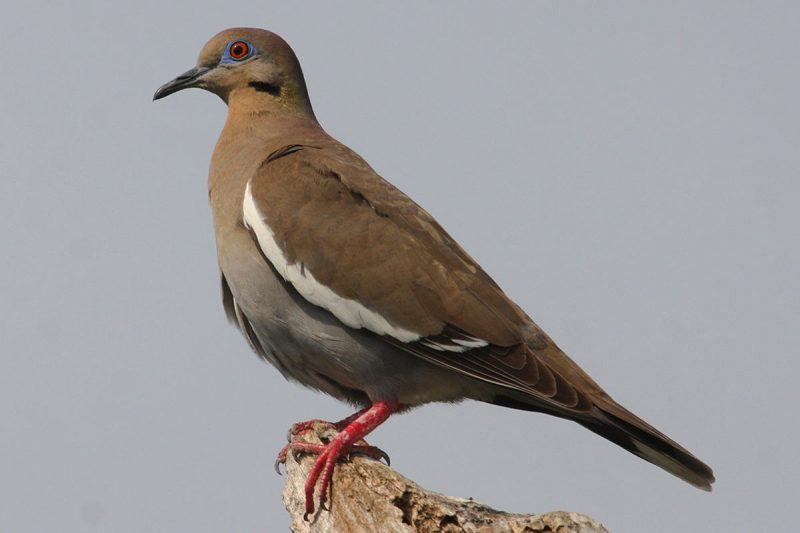
The White-winged Dove is a rare visitor to Delaware, more commonly found in the southwestern United States and Mexico. However, occasional sightings occur during migration or after storms. This medium-sized dove is about 11 inches long, with a robust body and a striking white edge on its wings that is visible both in flight and at rest. Its plumage is light brown to grayish, with a distinctive blue eye ring and a patch of red skin around the eyes.
This species prefers open woodlands, farmlands, and suburban areas with plenty of seed-bearing plants. In Delaware, they are often spotted near backyard feeders or agricultural fields when they appear. White-winged Doves primarily eat seeds and grains, especially from agricultural crops like corn, sorghum, and sunflower.
Their cooing call is a rhythmic “who-cooks-for-you” sound that can be quite loud and carries over long distances. Males perform courtship flights, gliding with raised wings and calling persistently to attract mates.
Although they do not breed regularly in Delaware, they may appear as accidental visitors during spring or late summer. These doves have shown adaptability to new regions due to climate changes and food availability, so sightings in the state have gradually become more frequent over the years.
Common Ground Dove (Columbina passerina)
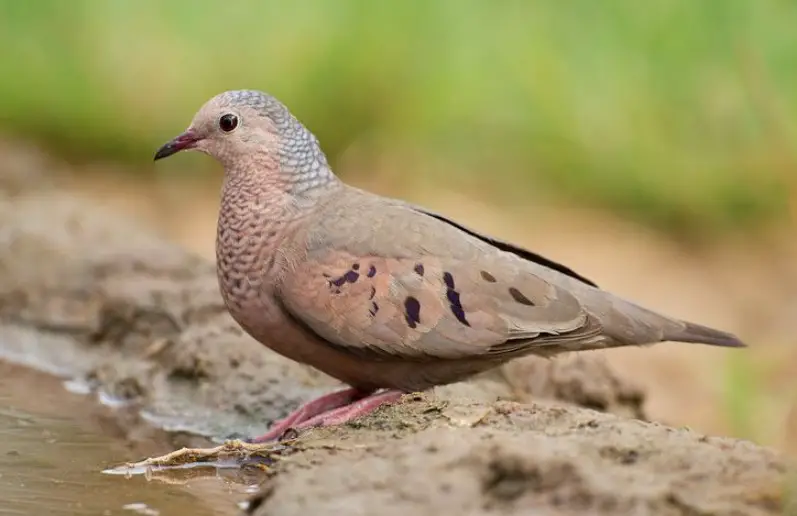
The Common Ground Dove is the smallest dove species occasionally seen in Delaware, measuring only 6 to 7 inches in length. This compact bird has a short tail, rounded wings, and a scaled appearance on its neck and chest. Its coloration is grayish-brown with subtle pinkish tones, helping it blend perfectly with sandy or dry environments. The bill has an orange base tipped with black, adding a splash of color to its otherwise earthy appearance.
This species prefers warm, open areas such as coastal dunes, brushy fields, and scrublands. While Common Ground Doves are primarily residents of the southern United States, rare individuals may wander northward and appear in Delaware, particularly along coastal areas during warmer months.
Their behavior is quiet and secretive, often staying close to the ground where they forage for small seeds and insects. Their flight is quick and low, accompanied by rapid wingbeats. When disturbed, they may burst into flight suddenly, flashing their reddish-brown wing linings.
The call of the Common Ground Dove is a soft, repetitive “coo” that sounds more like a gentle murmur than the mournful song of the Mourning Dove. These doves are monogamous and often seen in pairs, nesting in low shrubs or on the ground. While rare in Delaware, their occasional presence adds to the state’s avian diversity, delighting birdwatchers who are lucky enough to spot one.
Tips for Observing Doves in Delaware
Watching doves in Delaware offers a tranquil and rewarding experience for birdwatchers and nature lovers alike. These birds are known for their calm demeanor, graceful movements, and soothing cooing that fills the air during early mornings and evenings — their most active times of day. Choosing a quiet observation spot during these hours increases your chances of witnessing natural behaviors such as feeding, preening, and gentle courtship displays.
To attract doves to your yard, provide a welcoming feeding environment. Doves prefer to feed on the ground or from large, flat platform feeders rather than hanging ones. Filling your feeder with millet, cracked corn, safflower, or sunflower seeds is highly effective, especially for Mourning Doves and Eurasian Collared-Doves. Keeping feeders clean and refilling them regularly encourages consistent visits. In winter, scattering seed directly on the ground can also draw doves closer, as they forage naturally in open areas.
Providing a clean, shallow birdbath is another excellent way to attract doves year-round. They rely on accessible water sources for both drinking and bathing, and a gently sloping birdbath no deeper than two inches works best. Positioning the birdbath near shrubs or small trees offers them a sense of safety from predators while they drink or rest. Replacing the water daily and scrubbing the bath weekly prevents algae buildup and keeps it safe for wildlife.
When observing doves, patience and stillness are key. These birds are naturally cautious and will often take flight at sudden movements or loud noises. Wearing muted or natural-colored clothing can help you blend into your surroundings, while binoculars allow for close-up viewing without getting too near. Avoid approaching their nests, as doves may abandon their eggs if disturbed frequently.
Creating a dove-friendly environment also means maintaining native vegetation. Planting trees like pines, maples, or oaks provides excellent perching and nesting sites, while low-growing shrubs such as junipers or viburnums offer cover from predators. Avoid excessive pesticide use, as it can reduce seed availability and harm the insects that doves occasionally eat. With patience and care, your backyard can become a haven for Delaware’s dove species — offering peaceful moments of observation throughout the year.
FAQs About Doves in Delaware
Are Mourning Doves protected in Delaware?
Yes. Mourning Doves are legally protected under the Migratory Bird Treaty Act, although regulated hunting seasons are allowed in Delaware. It’s illegal to harm, capture, or disturb their nests outside hunting periods.
What do doves eat in Delaware?
Most doves feed on seeds, grains, and occasionally small insects. Backyard feeders stocked with millet, safflower, or cracked corn are particularly attractive to them.
Do doves stay in Delaware all year?
Mourning Doves and Rock Pigeons are year-round residents. Eurasian Collared-Doves are spreading gradually and may also stay year-round in some southern parts of the state, while White-winged and Common Ground Doves appear rarely and seasonally.
Where is the best place to see doves in Delaware?
Open fields, farmlands, and suburban neighborhoods offer the best chances to see Mourning and Collared-Doves. Urban centers like Wilmington are ideal for spotting Rock Pigeons, while coastal areas occasionally host rare species like the White-winged Dove.

